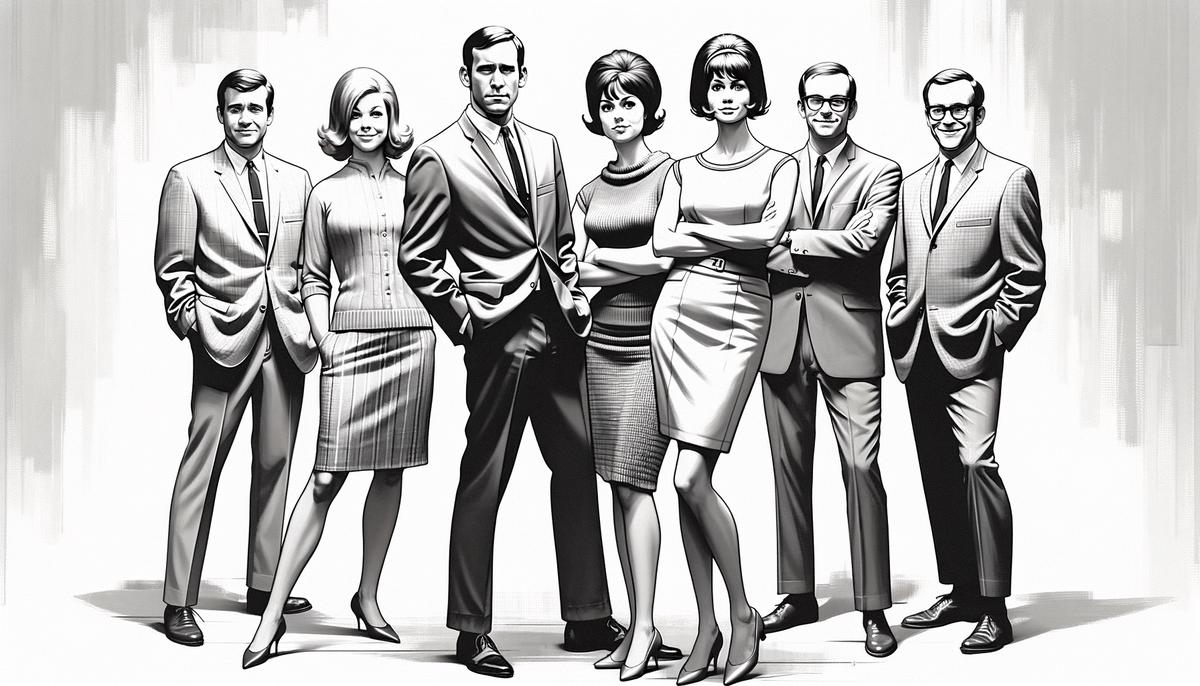Controversy and Impact
When CBS aired "The Dick Van Dyke Show" in 1961, it caused quite a stir. Mary Tyler Moore's character, Laura Petrie, shook things up with her capri pants instead of the typical TV housewife dresses. Procter & Gamble, the show's sponsor, nearly had a fit over Moore's wardrobe, insisting she wear dresses and pearls like a 1950s catalog model.
Despite the fuss, the capri pants stayed, though P&G demanded she wear a dress in at least one scene per episode. This clash almost axed the show after its first season, but Reiner and producer Sheldon Leonard fought hard to keep it alive. Leonard even hustled to snag last-minute sponsorship deals.
The risk paid off. Critics loved this fresh take on sitcoms. The show went beyond slapstick, diving into snappy dialogue and impeccable comedic timing. It cleverly blended humor from home and work, following Rob Petrie's life as a TV comedy writer.
"The Dick Van Dyke Show" redefined sitcoms by tackling topics usually avoided, from marital spats to work drama. It carved out its own space with a mix of physical comedy and clever punchlines, paving the way for future TV programs to become sharp cultural reflections.
Cultural Context and Reception
The early 1960s were buzzing with change, and TV was no exception. "The Dick Van Dyke Show" joyfully upended the image of the prim and proper housewife by bringing Laura Petrie, with her sass and capri pants, into American living rooms. This wasn't just about breaking costume rules; it was about shattering the mold of what a housewife could be.
The show's debut coincided with a time of unrest and progress. Civil rights movements were gaining steam, and cultural tides were shifting rapidly. Dick Van Dyke's vibrant comedic style brought lightness into homes craving laughter amidst societal shake-ups. His wide-eyed mischief, paired with Mary Tyler Moore's groundbreaking portrayal of an independent Laura, struck a delightfully subversive chord with viewers.
Audiences were hooked by the show's humor and its ability to portray work and home life with wit. Critics and viewers fell for Van Dyke's double takes and perfect timing, not to mention the sparks flying between him and Moore. The chemistry among the cast made characters like wisecracking Buddy Sorrell and pragmatic Sally Rogers feel like family. This energy painted a lively picture of relationships, work-life balance, and even hinted at unspoken topics like intimacy and modern parenting.
After overcoming initial hiccups, the show emerged as a benchmark for sitcoms—thoughtful without sacrificing fun, and progressive while remaining accessible. It offered a reflection of both domestic bliss and office politics. As it found its groove, it spoke to both the heart and the times, showing that even in a changing world, humor and humanity remained timeless anchors.
"The Dick Van Dyke Show" didn't just fit into 60s culture; it danced into it, sporting capri pants and a cheeky grin, all while redefining how television portrayed everyday American life.

"The Dick Van Dyke Show" transformed the sitcom landscape, offering a fresh mix of humor and cultural insight. By challenging norms with its portrayal of family and work life, it created a lasting legacy that continues to shape television today.
- Grant H. The Hollywood Reporter's original review of The Dick Van Dyke Show. The Hollywood Reporter. 1961.
- The Editors of Encyclopaedia Britannica. The Dick Van Dyke Show. Encyclopaedia Britannica.
- Matz M. How 'The Dick Van Dyke Show' Accidentally Predicted the Future of Television. The New York Times. 2013.
- Westenbroek K. Dick Van Dyke on His 98th Birthday Special, Winning an Emmy at 98 and Why He's Not Retired. TheWrap. 2023.
- Kiesewetter J. P&G Nearly Canceled 'Dick Van Dyke Show' Over Mary Tyler Moore's Capri Pants. WVXU. 2023.
